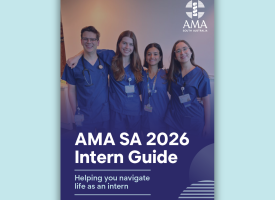Crippling workforce shortages will not be solved by more medical graduates alone
Federal government funding for more university places for rural-trained medical students must be paired with extra investment in programs that help graduates undergo specialist training in regional locations.

The Australian Medical Association is calling for a greater focus on creating training places in regional areas to clear a bottleneck of medical graduates who are sometimes waiting years to enter specialist training due to limited opportunities.
AMA Vice President Danielle McMullen said unless we act now to expand opportunities for doctors to live, work and train in regional areas, the federal government’s decision on Tuesday to increase the number of Commonwealth supported places for rural-trained medical students would not fully deliver on its intended purpose.
“Australia is producing medical graduates at rates well above the OECD average, and yet rural areas are still plagued with crippling medical workforce shortages,” Dr McMullen said.
“This is because medical students who train in rural Australia are often left with no option but to return to a major city if they are to complete prevocational and specialist training because of a lack of training places in those regional areas.
“As the number of medical graduates increase, expanding opportunities for them to undertake extra training, placements and gain long-term work in regional areas is both logical and necessary.”
Dr McMullen said increasing opportunities for medical graduates to complete prevocational and specialist training within regional areas would also improve access to care for patients in those rural communities.
“Rural medicine is an incredibly rewarding career, because you can truly care for your whole community and treat a wide range of conditions, but this requires specific training and support,” she said.
“Doctors who can complete their training in regional hospitals are more likely to remain in practice in a regional location and can offer significant benefits to their regional community.
“Increasing our capacity to train in regional areas will also require coordination with medical colleges to ensure there are suitable and safe training places available to avoid overcrowded and diluted clinical training environments.”
The AMA remains concerned about a significant lack of reliable workforce data — which has not been properly collected since Health Workforce Australia was abolished in 2014 — making it difficult to form evidence-based policies.
“We need an independent health workforce planning body that provides quality evidence and data to inform new policies that would help address regional doctor shortages,” Dr McMullen said.



